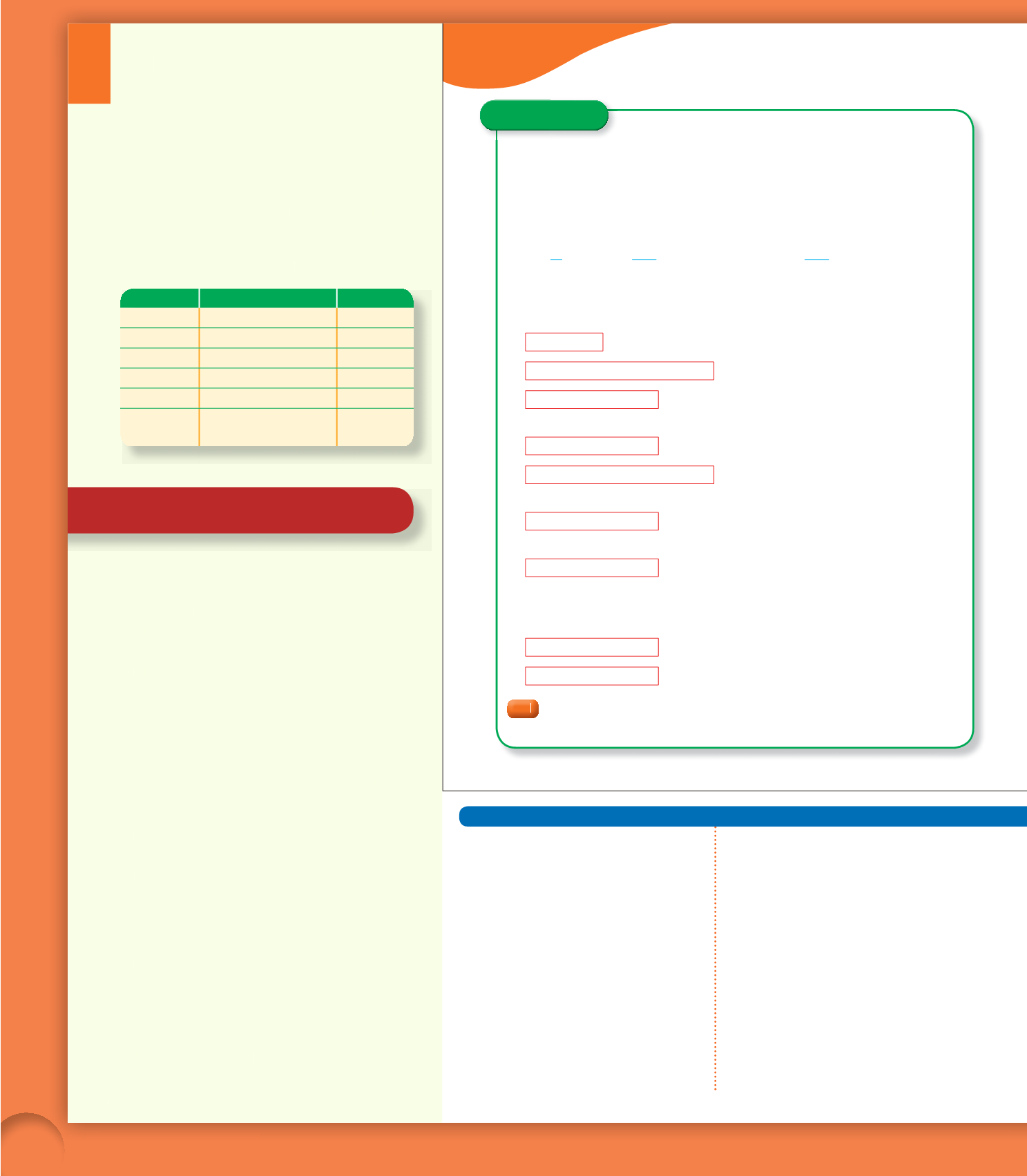

Book 4 Unit 6
78
Presentation
.
In this section, students will learn and practice
the use of the neuter article
lo
to refer to a
general concept or an abstract idea. Students will
also learn that this article has no plural and does
not refer to a gendered word.
Activities
Standards
Resources
Gramática 1.2, 3.1
21.
1.2, 1.3, 3.1, 4.1
22.
1.3, 3.1
23.
1.2, 1.3
Audio
24.
1.2, 1.3, 3.1
25.
1.1, 1.2, 2.2, 3.1,
3.2, 5.1
Teaching Suggestions
Warm-Up/ Independent Starter
.
Ask students to complete the following
sentences:
1.
Lo importante en la vida es…
2.
Lo más difícil de la escuela es…
3.
Lo primero que haré cuando me gradúe es…
Preparation
.
Have students read the introduction to the
grammar presentation silently. Then read the
first part (
Usos del artículo neutro
lo) aloud to
students. Next, ask students to revise their
sentences from the Independent Starter and
determine the structure that was used in each
case. Call on volunteers to share their sentences.
.
Ask students to translate their sentences from the
Independent Starter. (1. The important thing about
life is… 2. The most difficult part/thing about
school is… 3. The first thing I’ll do when I graduate
is...) Note to students that they may be tempted
to translate these statements as *
La cosa
importante/difícil es
... since the article
lo
does not
have an exact equivalent in English. However, they
should use the article
lo
in these cases.
.
Have students work with a partner to read the
last section of the grammar presentation
(
El artículo
lo
enfático
). Then have pairs work on
activity 21.
Gramática – El artículo neutro
lo
DESAFÍO 1
Unit
6
DEVELOPING LEARNERS
r
Ask students to form sentences.
1.
pintar? / lo / ¿Sabes / que / difícil / es
(¿Sabes lo difícil que es pintar?)
2.
colores. / debes / elegir / Lo / que / es /
primero / hacer / los (Lo primero que
debes hacer es elegir los colores.)
3.
interesante / de / las / más / ese / la /
proporción / figuras. / cuadro / Lo / es /
de (Lo más interesante de ese cuadro es la
proporción de las figuras.)
4.
ver / rápido / que / Hay / pintas. / que /
lo (Hay que ver lo rápido que pintas.)
5.
nuestro / tuyo. / Lo / es (Lo nuestro
es tuyo.)
EXPANDING LEARNERS
r
Ask students to work with a partner and
complete these phrases:
1.
Lo más fácil de la clase de Español es …
y lo más difícil es…
2.
Lo que más distingue a un buen artista
de uno mediocre es…
3.
Lo importante en la obra de un artista
es…
4.
Lo primero que debes hacer al llegar
a la escuela es…
5.
En el arte, lo bueno es que…
r
Call on student pairs to read their
statements aloud.
Differentiated Instruction
El artículo neutro
lo
DESAFÍO 1
r
Usamos con frecuencia el artículo neutro
lo
delante de un adjetivo o de una cláusula.
Este artículo no se usa nunca con nombres y no tiene un equivalente exacto en inglés.
lo
importante
(the important thing/part)
lo
que me dijiste
(what you told me)
Atención: no
debes confundir el artículo neutro
lo
, que es invariable,
con el pronombre
de objeto directo
lo
, que varía en género y número.
Lo bueno es que lo/la vi cuando entraba al museo y lo/la pude saludar.
article
pronoun
pronoun
Usos del artículo neutro
lo
r
El artículo neutro
lo
se usa principalmente en estos casos:
–
Delante de un adjetivo masculino singular:
lo
1
adjetivo
Todos admiramos
lo bello
.
(
5
las cosas bellas).
We all admire what is beautiful.
lo más
/
menos
1
adjetivo
1
de
/
que
La técnica es
lo más difícil de
la pintura.
Technique is the most difficult thing about painting.
lo
+ adjetivo +
ser
+
que
Lo bueno es que
hemos vistomuchos cuadros.
The good thing is that we have seen many paintings.
–
En construcciones posesivas:
lo
1
pronombre posesivo
Lo mío
es tuyo.
What is mine is yours.
lo de
+ pronombre personal
/
nombre
Lo de ella
es tuyo.
Lo de María
es tuyo.
What is hers is yours.
What is María’s is yours.
–
Delante de un numeral ordinal para expresar orden o secuencia:
lo
1
ordinal
Lo primero
es observar los colores.
The first thing is to look at the colors.
–
Delante del pronombre relativo
que
para introducir una cláusula:
lo que
1
cláusula
Tengo
lo que
necesito.
I have what I need.
El artículo
lo
enfático
r
El artículo
lo
se usa también delante de un adjetivo o un adverbio en construcciones
enfáticas. En este caso, el adjetivo puede variar en género y en número:
lo
1
adjetivo
1
que
Sé
lo difíciles que
son algunos cuadros.
I know how difficult it is to understand some paintings.
lo
1
adverbio
1
que
¿Sabes
lo bien que
pinta este artista?
Do you know how well this artist paints?
1
2
Piensa.
Traduce estas oraciones al español. ¿Qué estructuras con
lo
usaste?
a.
We always do what is right.
b.
I understand how important art is
.
Gramática
310


















